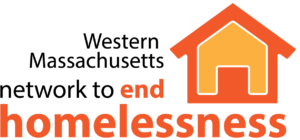Individual Services Committee Meeting
May 7, 2015
Attendees: Beth Barbra, Veterans Inc., Elizabeth Bienz, ServiceNet, Matt Castleman, SMOC, Steve Connor, Veteran Services, Sarah Coutier, YWCA, Julie Federman, Town of Amherst, Janice Humason, Friends of the Homeless,Todd Konlezhny, HRU/The Lighthouse, Jay Levy, Eliot CHS-Homeless Services, Gerry McCafferty, City of Springfield, Lizzy Ortiz, City of Springfield, Luz Ortiz, Friends of the Homeless, Katie Miernicki, ServiceNet, Bill Miller, Friends of the Homeless, Dave Modzelewski, REACH coordinator, Ali Pinschmidt, ServiceNet, Denise Rivera, Friends of the Homeless, Joe Schroeter, Eliot CHS-Homeless Services, Pamela Schwartz, Network coordinator, Jerry Ray, Mental Health Association, Rebekah Wilder, Craig’s Doors, Delphine Wray, Friends of the Homeless
Zero 2016 Campaign Update:
Gerry provided an update on the Hampden County CoC’s participation in the Zero 2016 campaign (goals: end veteran homelessness by end of 2015; chronic homelessness by end of 2016). This is a national campaign (led by the same groups that did the 100,000 Homes campaign) with dozens of communities participating nationwide. There is a big intersection between this campaign, best practices and what HUD is requiring CoC communities to do.
Gerry led us through a powerpoint created by the Campaign (click here):
Defining “zero” as “functional zero:” if the number of homeless veterans at the next Point in Time Count is less than the number we house on average a month. Our first goal is to house the people who are currently homeless and have been for some time. We do that by first ensuring an accurate count, then analyzing how many we are assisting into permanent housing each month and how we can increase that number each month. It is understood that we will not be able to stop new people from ever becoming homeless; the measure of success is if we can re-house them within 30 days. That equals “functional zero.”
For example: if our community houses 3 veterans each month and we find at our PIT count that we have 2 homeless veterans, we have arrived at functional zero.
The campaign includes determining our Monthly Housing Placement Goal. That happens through a formula that includes calculating: how many homeless veterans we can expect to see in 2015 (measured through a formula based on the PIT count). For Hampden County, that number is 87 (PIT count in 2015 showed 38 homeless veterans). Divided by 11 months (remaining time as of January, 2015) which makes the Hampden County goal housing 8 people per month.
Then we review if the community is on track. January: housed 5; Feb. housed 7, March housed 1. Not currently on track..
In contrast: chronically homeless – because we have a longer timeline – until end of 2016, we are on track: with 2 years to reach our goal, and an estimated number of 91 chronically homeless individuals, we must house 4 individuals each month. In January, we housed 5; Feb. housed 3; March housed 5. On track!
Zero: 2016 theory of Change
- improve housing placements
- increase capability of local leaders
- build a creative, connected and committed movement
- optimally functional zero – 2016 team
The Campaign is sponsoring a week-long webinar series this week, supporting communities in plans for an “Action Camp” and 30 day push to house veterans. Hampden County is in a better place than a lot of other communities because of its relationship with the Springfield Housing Authority (access to housing units) and with the VA (good partnerships). Entity is rapid results institute. Action Camp and then 30 day push.
Release of Information
As part of the campaign, we are compiling a registry that includes who we are trying to house. Then it is necessary to assess each individual’s needs and find the best housing match. Hampden County has agreed to use the VI-SPDAT as its assessment tool. But confidentiality issues require a release of information from the individual so providers can exchange VI-SPDAT scores and determine appropriate housing needs.
Mercy Hospital offered to draft a Release of Information form that would cover both federal and state law for information sharing for purposes of looking at the VI-SPDAT. Gerry distributed the draft form and has asked people to review it to ensure the right entities are listed (click here).
Once we have this release form established and it gets implemented, we can start putting people into HomeLink (the campaign’s online registry tool).
The only items that will be shown at the REACH meetings are the name and the score. Other information will remain confidential.
CoC Competition
Gerry announced that CoC competition has started for this year. In order for the Hampden County CoC to apply for additional funding, it must have certain policies and procedures in place. Gerry will be in touch by email for review (a full CoC board meeting is taking place next Friday). The sub-committee on coordinated intake and assessment will take place on Tuesday, 1 pm at Friends of the Homeless.
For applicants, NOFA will come out in early to mid-June, within about a week after that, the CoC will get out local requests for proposals. Now is the time to start thinking about what agencies may want to do (matching funds are required. New projects that are allowed are PSH for chronically homeless, rapid re-housing for families and individuals and for staffing a coordinated assessment function.
Special Guests from Rochester, NY
Bill Miller introduced a group of visitors to FOH from Rochester, NY. They are visiting FOH to learn more about its shelter and housing first resources. They currently run a shelter in Rochester (House of Mercy) but the city has thus far resisted becoming real partners in the problem of homelessness (destroyed a tent city last summer). We shared our experience over the last 8 years in Springfield – from a time when there were hundreds of homeless individuals living in the city unsheltered – and how the engagement of city leaders with business leaders made a huge impact in moving towards a Housing First approach.
Point in Time Count:
Gerry distributed the hand-out summarizing the 2015 Hampden County Point in Time Count results (click here).
Findings: 3009 people homeless. 10 outside, 93.2% in emergency shelter (88% of 3002 were families; 12% were individuals).
756 homeless families – over 2,000 people including children (astonishing!)
261 individuals
13% veterans, 28% homeless, .4% unsheltered
Majority of homeless were latina
58% of all homeless persons are Latino even though Latinos comprise 21% of the population
1600 children homeless.
Chronic individuals going down at a slight rate; unsheltered population decreased significantly.
Last year homeless families increased by 35%; this year 19% up
Among families, chronic homelessness is not that prevalent (and chronic stems largely from long shelter stays – average shelter stay is 7 months)
Roughly 30% of homeless families are from out of area. The overall number of homeless families went up, but the number of motel families went down. Massive expansion in shelter capacity.
Gaps Analysis
Gerry distributed the Hampden County gaps analysis which looks at the PIT count and housing inventory and asks housing providers to assess gaps (click here). While this gaps analysis happens ever year, with the ability to apply for funding for new programs, it is especially important to understand where the gaps are. The question is: what do we need to help people move to permanent housing?
Biggest gaps: safe havens and permanent supportive housing. HUD doesn’t fund Safe Havens anymore. So we need to figure out how to help them transition to PSH. This frame comes from HUD in the context of their effort to move communities to move PSH.
Within the next couple of weeks, we must look at this, come to an agreement on our needs and report back to HUD as part of the application.
For families, this is harder to determine because the state does not have great data. It is more difficult to ascertain level of need for supports. Nationally, it’s been found that intact families need basic housing more than they need additional supports.
Please respond to Gerry with thoughts or questions.
Next meeting:
We agreed we would merge June’s meeting into the NAEH clinic meeting of June 3, 8:30-4:30 at UMass-Springfield, 1500 Main Street, Classroom 14. We would meet next as a committee on Thursday, July 9, 10:30-noon, Northampton location to be confirmed.
Pamela will send out invitation to 6/3 clinic to all and ask for RSVP’s.

